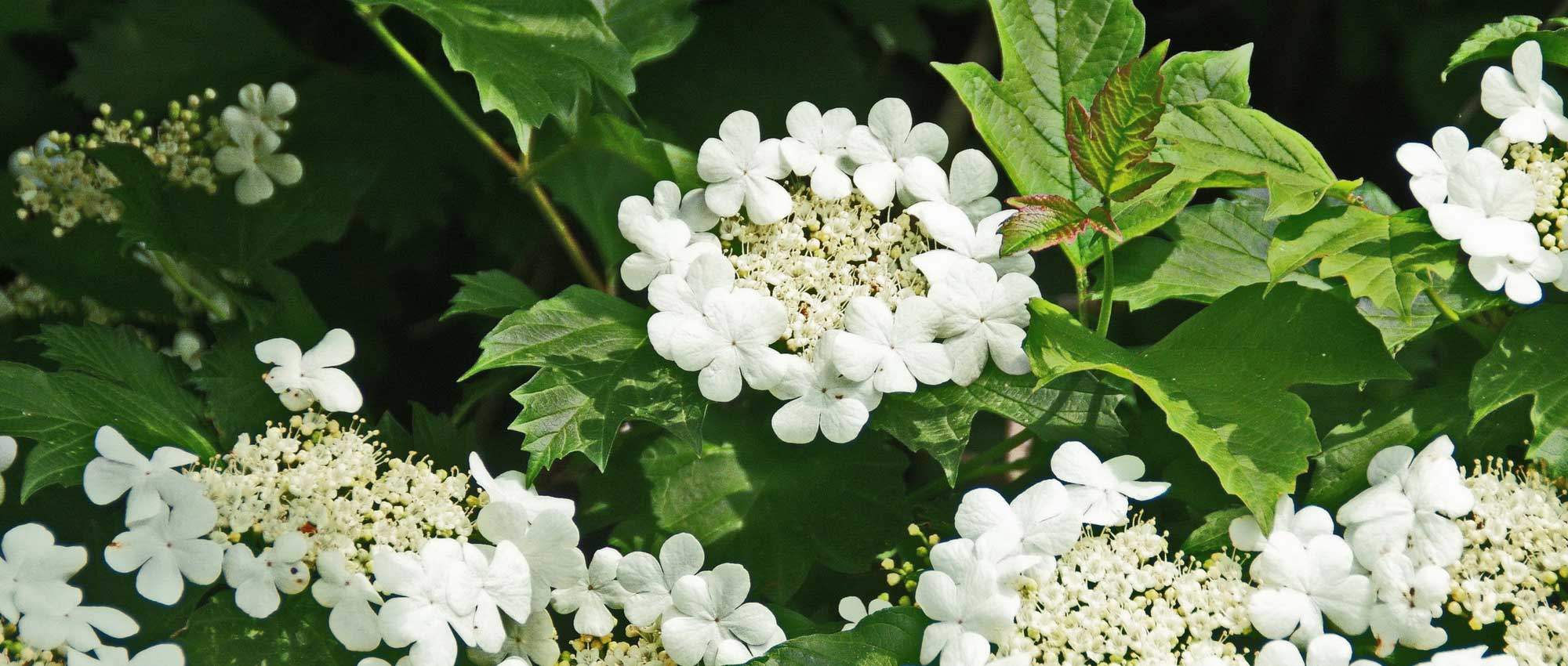
Viburnum, Snowball: which variety to choose?
Our tips for making the right choice!
Contents
Very vigorous, the Viburnum is an interesting bush in every season due to its flowering, foliage, and decorative berries! It offers delicate blooms in white or pink tones, sometimes highly fragrant. Hardy and easy to grow, it adapts to various situations: it can be planted in the ground or in pots, in rockeries or as a hedge. With its often evergreen foliage, it remains attractive even in mid-winter and serves as an effective screen!
So how do you make the right choice among the countless varieties? Consider the growing conditions, as they differ depending on the species. But also, of course, your preferences: do you want to emphasise the flowering, which can be so spectacular, the foliage, or the decorative berries? What purpose do you intend for the viburnum? Is it for creating a hedge, growing in a container, or even in a rockery? By following our advice, you will easily find the variety that suits your situation and desires!
For what situation?
Most viburnums thrive in partial shade, in slightly acidic or neutral soil. The laurustinus (Viburnum tinus) is the easiest to grow: it is robust, low-maintenance, and adapts to various situations.
- In acidic soil
To determine the pH of your soil, you can purchase a soil testing kit at a garden centre. If it is slightly acidic, almost all viburnums can thrive there. However, if it is distinctly acidic, it is better to choose Viburnum davidii or Viburnum plicatum. You can create a bed with heather soil, planting them in partial shade, in cool, well-drained soil, alongside rhododendrons or heathers. The Viburnum davidii is an evergreen species suitable for ground cover. As for Viburnum plicatum, it boasts a superb layered habit and pure white flowering. It is also possible to slightly raise the pH by adding dolomite (sedimentary rock).
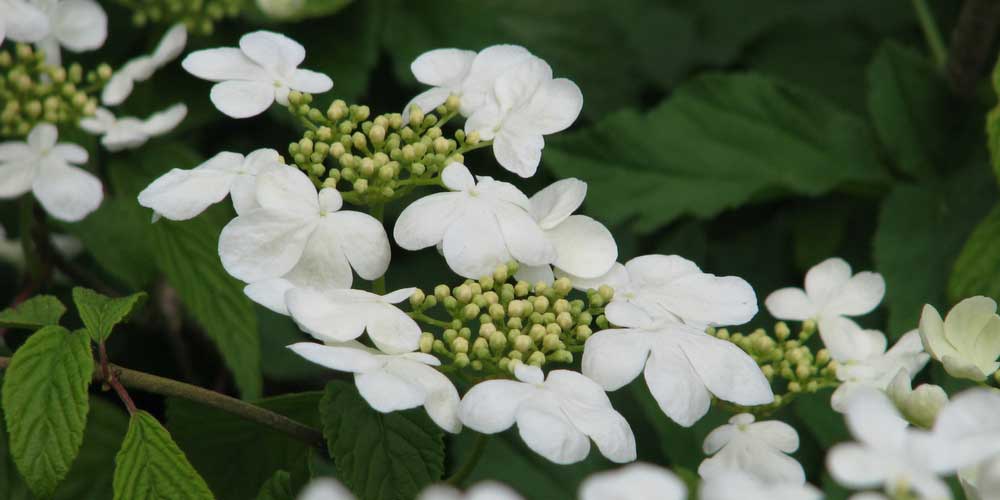
In acidic soil, you can choose Viburnum plicatum ‘Mariesii’ (Photo: Steve Law)
- In calcareous soil
Although most species prefer neutral or slightly acidic soils, some viburnums tolerate calcareous soils. This includes laurustinus (Viburnum tinus), wayfaring tree (Viburnum lantana), and Viburnum sargentii. Laurustinus is low-maintenance and adapts to a wide range of situations. You can choose Viburnum sargentii ‘Onondaga’. It offers spring flowering in pale pink and superb foliage that starts bronze, then turns green, and eventually becomes purple in autumn.
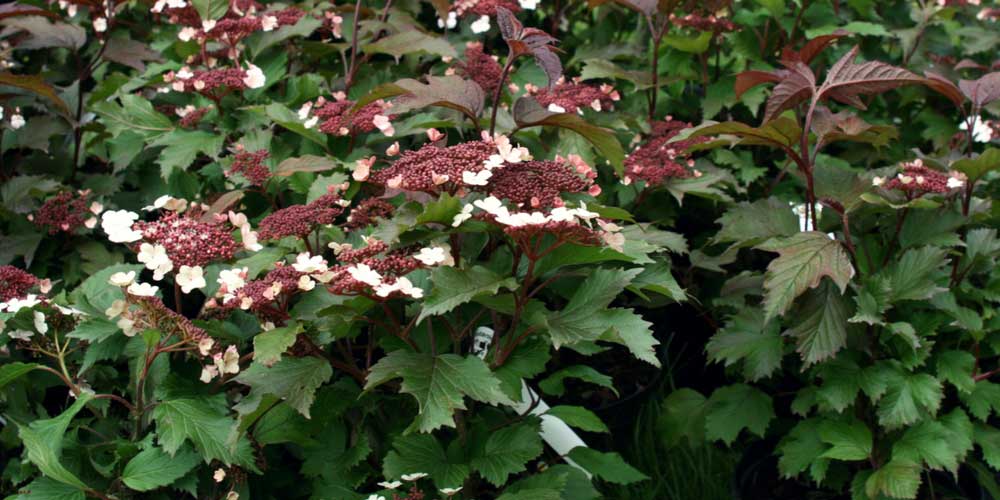
Viburnum sargentii ‘Onondaga’ adapts to calcareous soils!
- In full sun
Most species prefer partial shade and are sensitive to intense heat. If you do not have a shaded area, it is better to choose laurustinus (Viburnum tinus) or wayfaring tree (Viburnum lantana). They will thrive in full sun! Also discover Viburnum tinus ‘Lisarose’: it is appreciated for its evergreen, fine, glossy foliage and winter flowering. It is easy to grow and produces lovely pink flower buds that then give way to soft pink flowers!
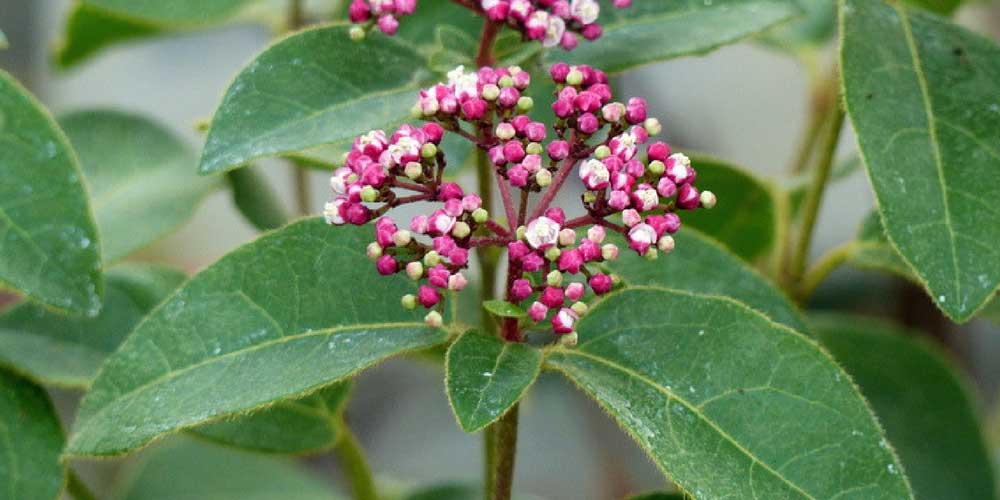
Viburnum tinus ‘Lisarose’ will thrive in full sun
For what visual effect?
- For a spectacular flowering!
Some varieties offer impressive flower displays, so take advantage of them! Be enchanted by the Viburnum opulus ‘Roseum’ and its elegant snowball-shaped flowers. Also discover Viburnum plicatum ‘Mariesii Great Star’: its horizontal branches are covered in spring with a multitude of pure white flowers! If you choose these varieties, be sure to plant them in isolation. Their flowering will stand out even more. You might also add some ground covers or bulbous plants to flower at their feet: for example, periwinkles or Eranthis hyemalis.
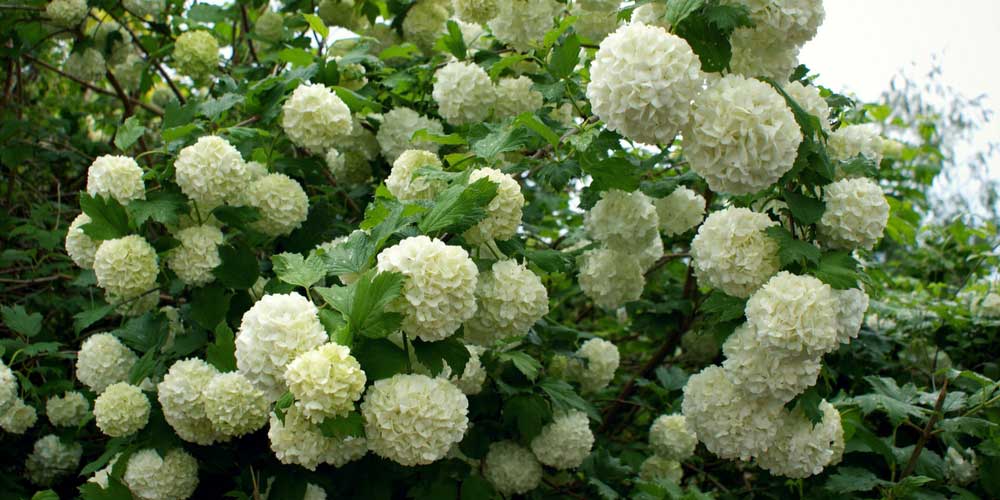
Enjoy the impressive snowball flowering of Viburnum opulus ‘Roseum’! (photo Kenraiz, Krzysztof Ziarnek)
- For winter flowers!
If you want to liven up your garden during the dreary season, choose the Viburnum bodnantense ‘Dawn’: being deciduous, its naked branches are adorned in winter with delicate pale pink flowers. The laurustinus (Viburnum tinus) also flowers in winter. The Viburnum tinus ‘Lisarose’ offers a remarkable pink flowering! These viburnums will undoubtedly make you forget the gloom and grey of winter! You can pair them with Camellia sasanqua or Sarcococca, which flower at the same time.
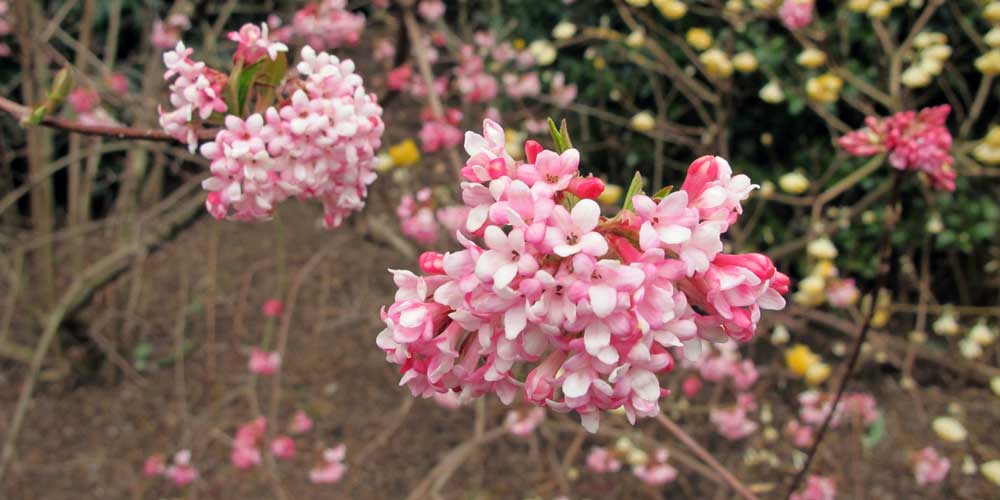
The Viburnum x bodnantense ‘Dawn’ offers a delicate and highly fragrant winter flowering. (Photo: Kristine Paulus)
- For spring flowers
To enjoy viburnum flowering from spring, choose the Viburnum plicatum, Viburnum opulus or Viburnum lantana. They offer abundant white flowering between May and June. Pair them with other spring-flowering shrubs, such as Japanese cherries or Deutzias.
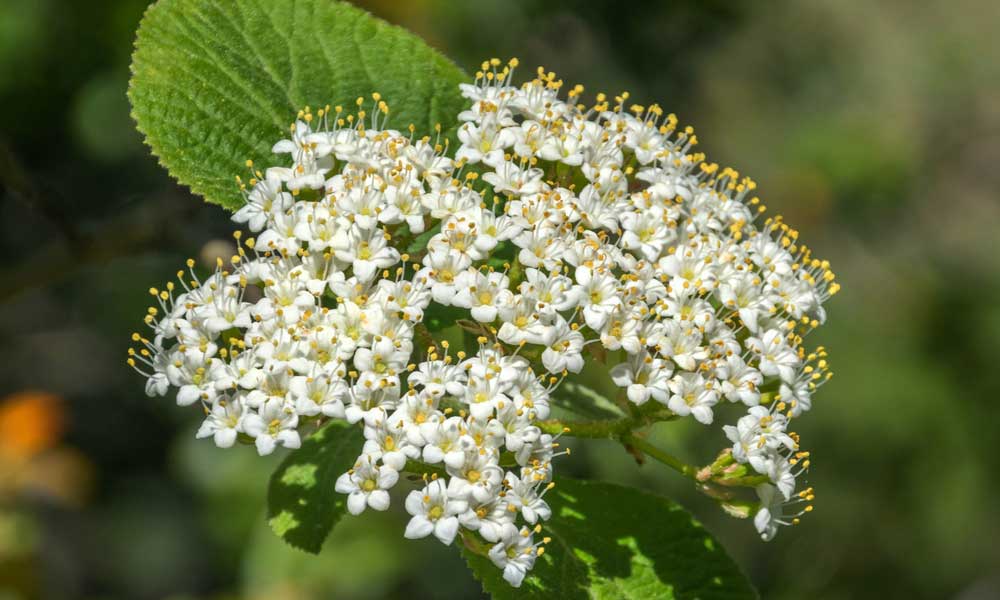
The spring flowering of Viburnum lantana! (Krzysztof Golik)
- For evergreen foliage!
If you want a viburnum that stays green during the dreary season, opt for the laurustinus (Viburnum tinus) or Viburnum rhytidophyllum. With their dense foliage and upright habit, you can grow them in hedges or borders. Also discover Viburnum davidii, which can be used as ground cover due to its spreading habit.
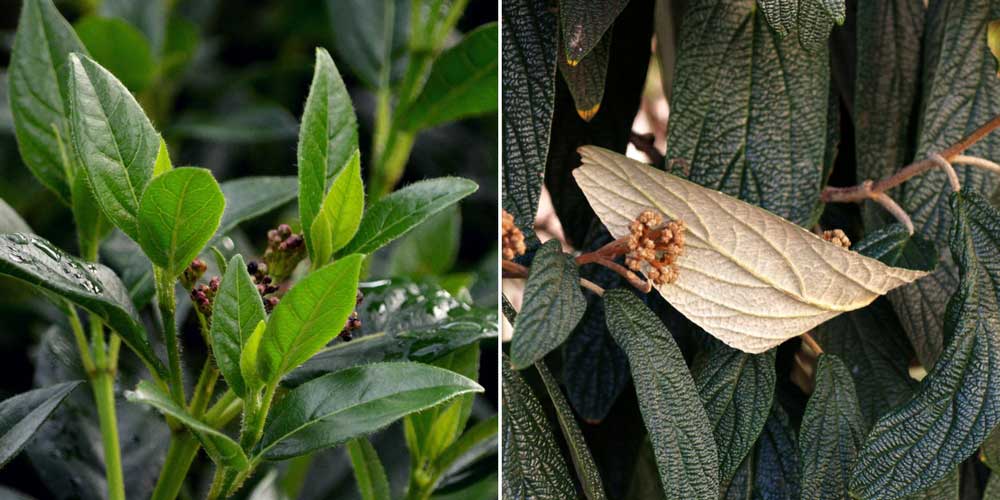
Enjoy the evergreen foliage of Viburnum tinus and Viburnum rhytidophyllum. (photo Sarefo)
- For stunning autumn colours!
Deciduous viburnums often take on magnificent colours in autumn! The leaves of Viburnum opulus turn orange-red, while those of Viburnum plicatum take on darker shades of purple-red. Also discover Viburnum ‘Le Bois Marquis’ whose foliage turns a lovely bright pink in autumn! As for Viburnum bodnantense ‘Dawn’, its foliage changes colour throughout the seasons: first copper, then green, and finally red in autumn!
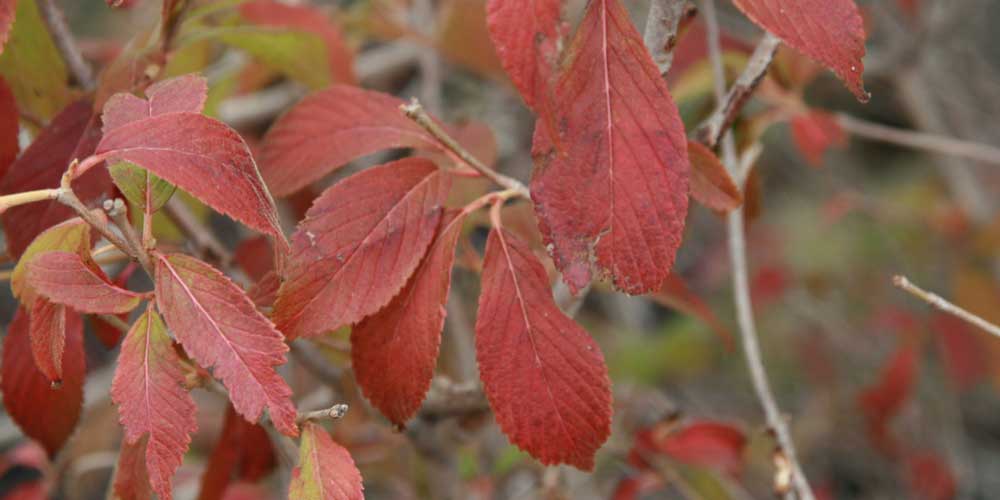
The foliage of Viburnum plicatum takes on lovely colours in autumn! Here, Viburnum plicatum var. tomentosum ‘Summer Snowflake’ (Photo: David J. Stang)
- For berries!
Enjoy the decorative berries of viburnums to add colour to your borders! We recommend planting them in groups to encourage fruiting. Viburnum opulus ‘Xanthocarpum’ is remarkable for its orange-yellow berries! If planted in shade or in a hedge, it will bring a lot of brightness. Likewise, Viburnum hillieri ‘Winton’, Viburnum lantana and Viburnum opulus bear bright red berries that will enliven your borders! Those of Viburnum dentatum ‘Blue Muffin’ are notable for their metallic blue colour.
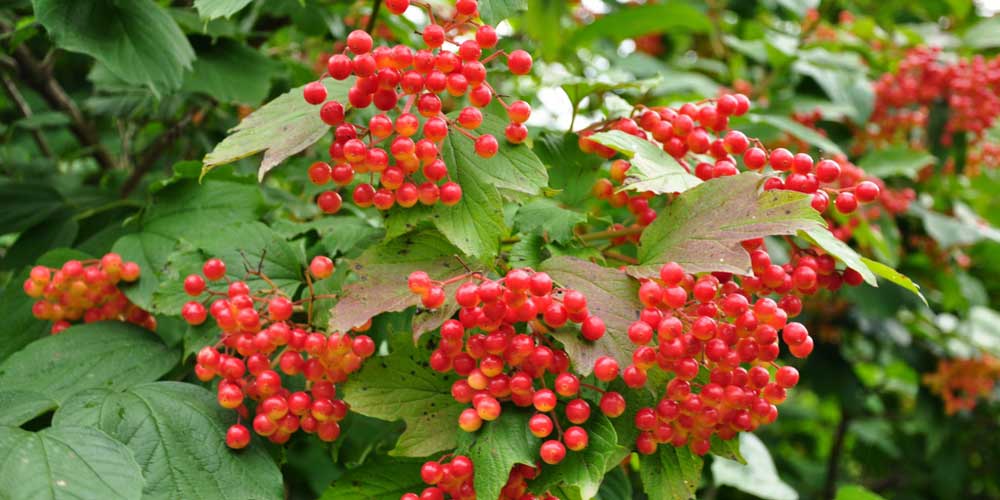
The colourful berries of Viburnum opulus are perfect for adding colour to a border or hedge! (Photo: Lazaregagnidze)
Discover other Viburnum
View all →Available in 3 sizes
Available in 2 sizes
Available in 1 sizes
Available in 1 sizes
Available in 4 sizes
Available in 2 sizes
Available in 1 sizes
Available in 4 sizes
Available in 2 sizes
Available in 1 sizes
For what purpose?
- In a container, in a small garden!
If you have limited space in your garden, consider compact varieties that you can plant in large pots or containers! Viburnum davidii or Viburnum tinus ‘Eve Price’ seem quite suitable for this purpose. We recommend the latter: its glossy, fine foliage and remarkable flowering give it a lot of charm… not to mention it will add a bit more height! Both varieties thrive in full sun but also tolerate partial shade. You can plant some flowers alongside them to add a splash of colour: primroses, grape hyacinths, or hyacinths.
→ Read also: 7 viburnums for small gardens or container growing
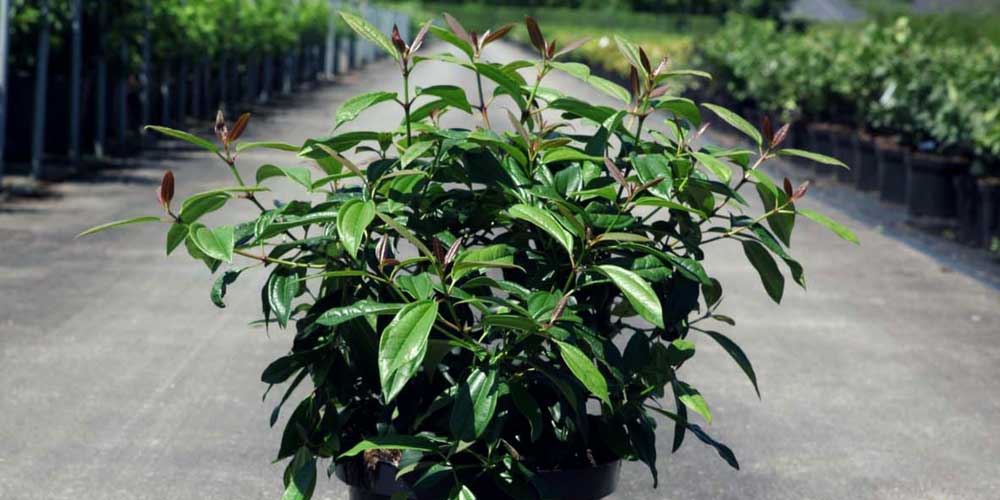
Viburnum davidii ‘Angustifolium’ can be grown in a pot.
- In a hedge!
Viburnums are well-suited for hedges, whether they are informal or more formal. Viburnum rhytidophyllum or Viburnum tinus are the most effective as privacy screens, as their foliage is both dense and evergreen. Well-suited to pruning, laurustinus seems particularly ideal for hedges! If you want your hedge to be more natural and rustic, choose the guelder rose: Viburnum opulus. It offers beautiful white flowers and red berries. For more diversity, mix varieties with winter and spring flowering, and those with deciduous and evergreen foliage.
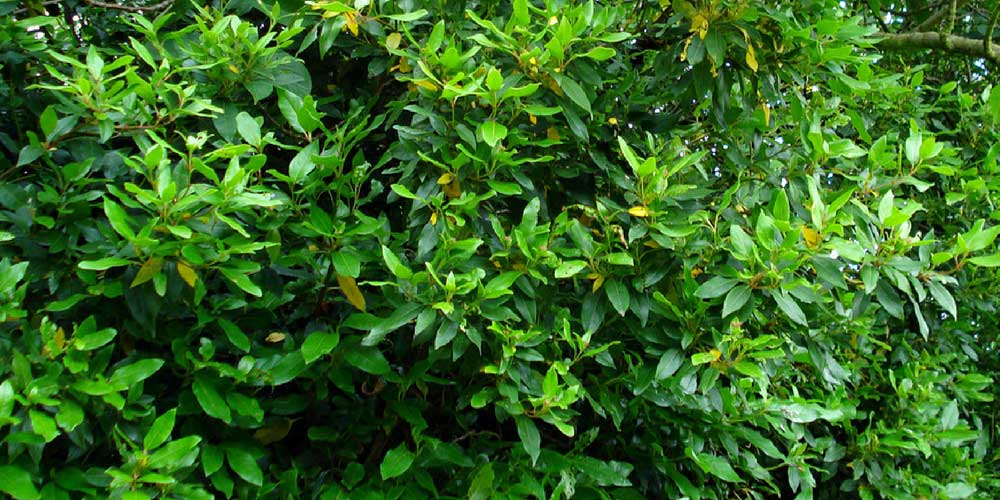
With its dense foliage, Viburnum tinus is perfect for creating a hedge! Here, the variety ‘Spirit’. (photo Mick Talbot)
- In a rockery
To enhance a rockery, opt for Viburnum davidii! With its low, spreading habit, you can use it as ground cover. It offers white flowers in spring and evergreen foliage. Low-maintenance, it is easy to grow! Feel free to pair it with dwarf conifers and carpet flowers (Iberis saxatilis, Gentiana acaulis…).
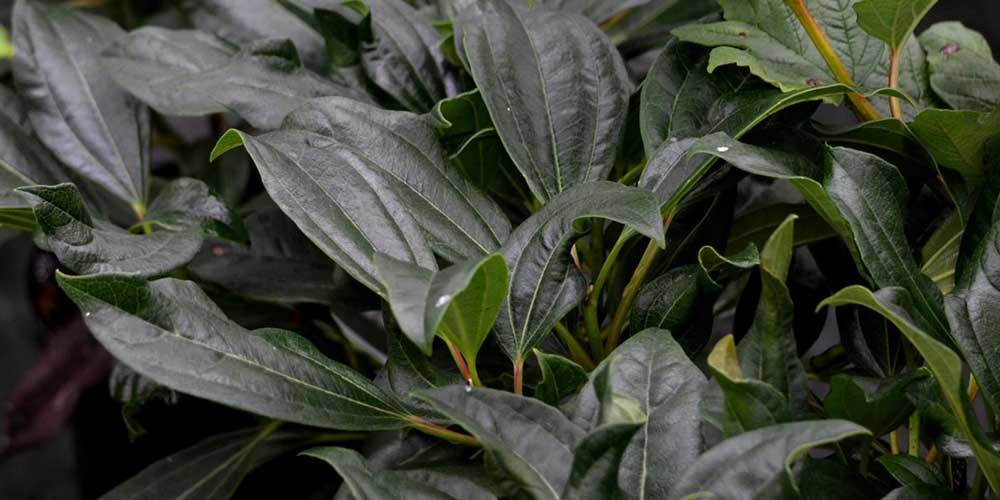
You can plant Viburnum davidii in a rockery.
- As a specimen plant
To fully appreciate their architecture and flowering, plant viburnums as specimen plants, especially Viburnum plicatum! Place the Viburnum plicatum ‘Mariesii’ in the middle of a short grass meadow, possibly with some ground cover at its feet. This will highlight its layered habit and its lovely pure white flowers! Additionally, it produces red berries, and its deciduous foliage takes on splendid purple hues in autumn. Also discover Viburnum plicatum ‘Mary Milton’ with its pink pompom flowers. It will add a touch of romance to your garden! With its snowball-shaped flowers, Viburnum opulus ‘Roseum’ is also perfectly suited for planting as a specimen.
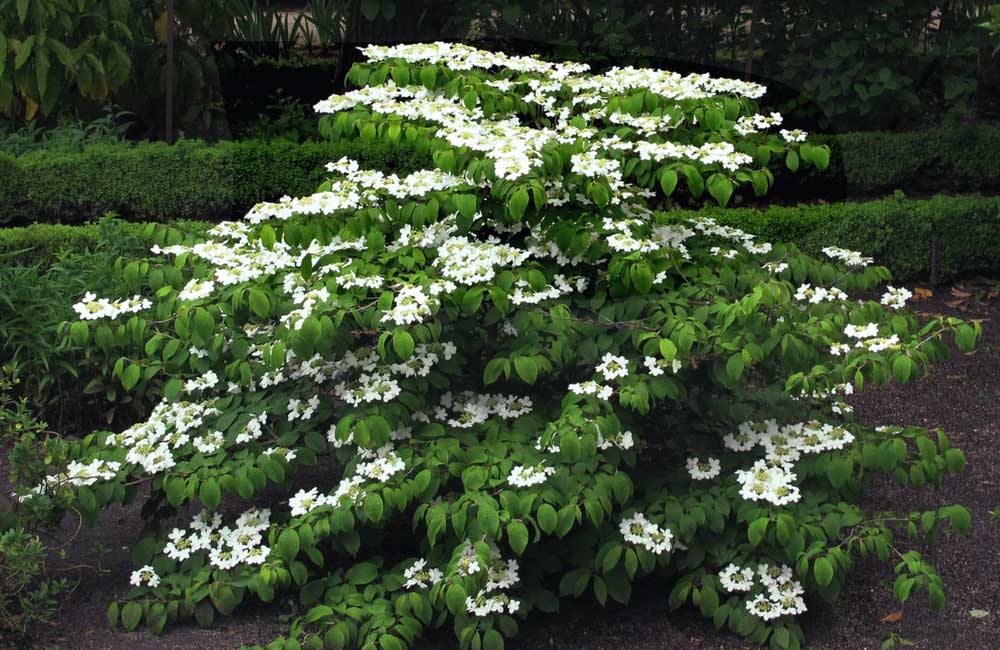
Viburnum plicatum ‘Mariesii’ is perfect as a specimen plant, to showcase its architecture and flowering! (photo Jacinta lluch Valero)
- Subscribe!
- Contents































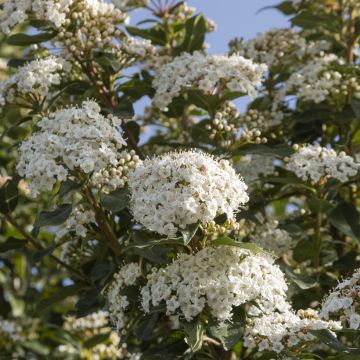
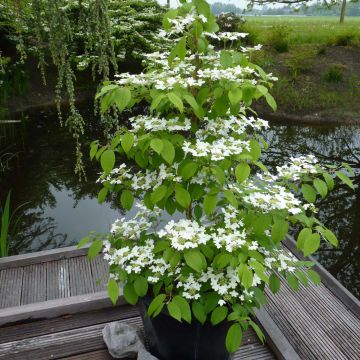
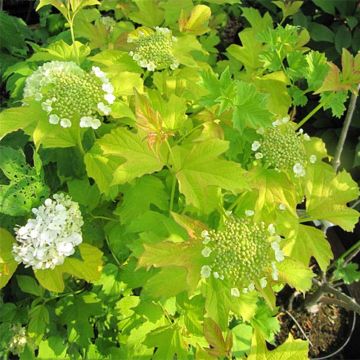
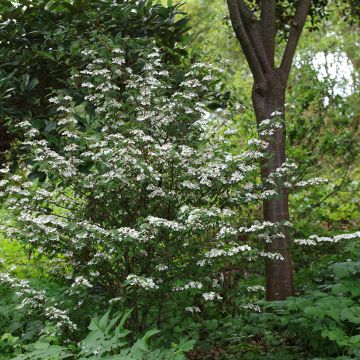
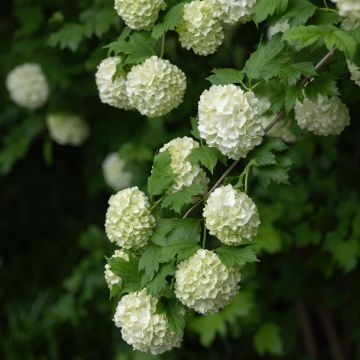

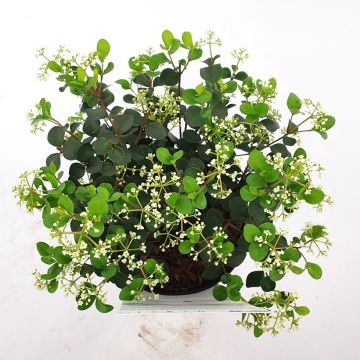

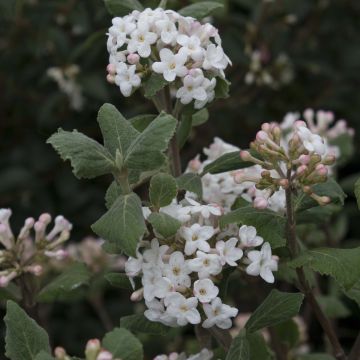
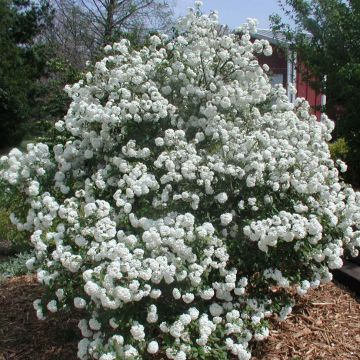
Comments